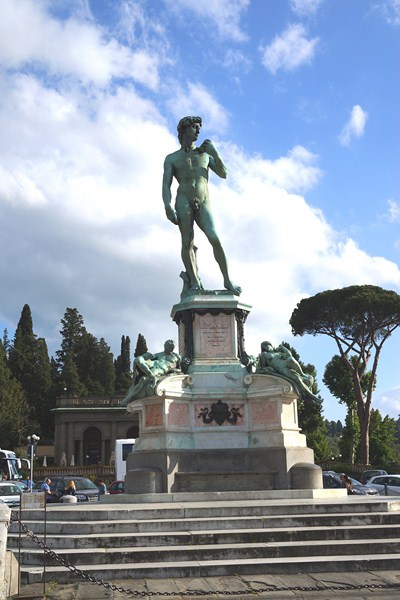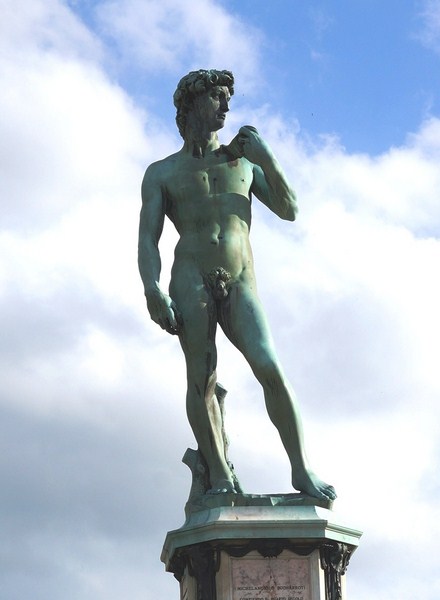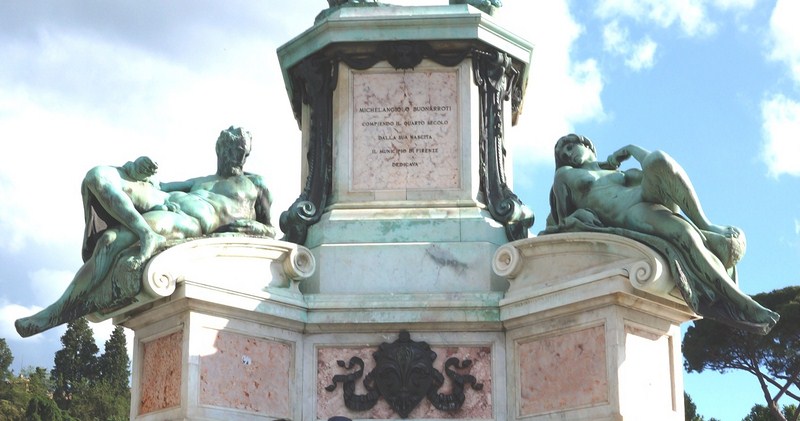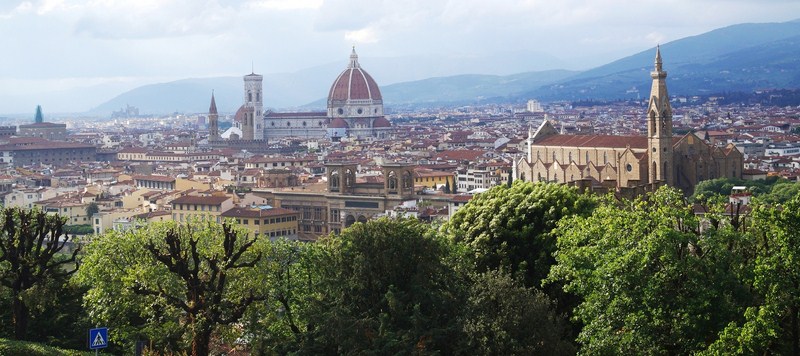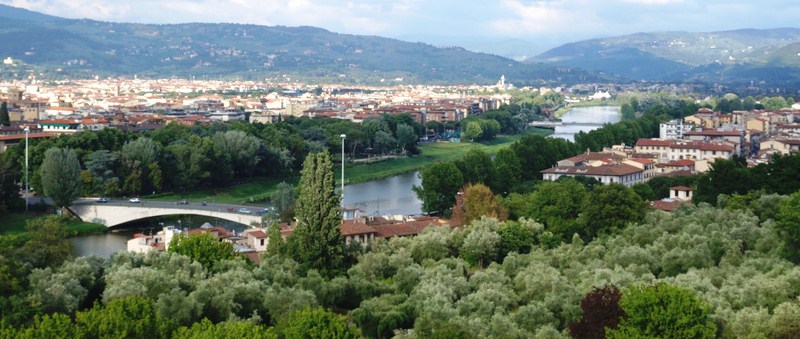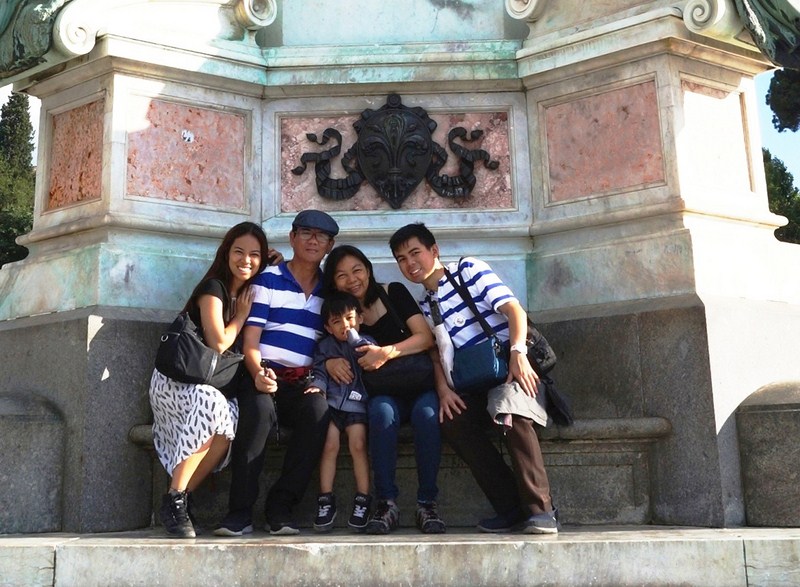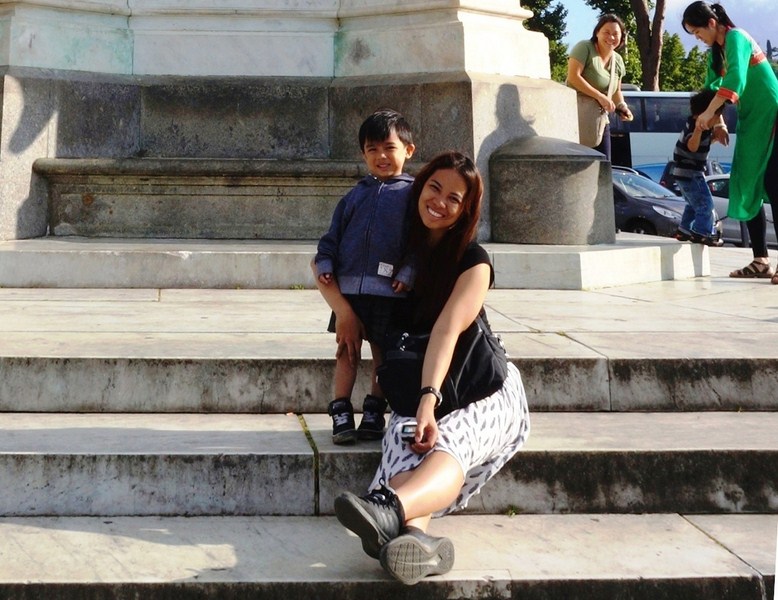This large, partly pedestrianized Florentine piazza, located across the Arno River from the center of Florence, was designed by Florentine architect Giuseppe Poggi, known for his creation of boulevards around the center of Florence, part of the so-called Risanamento (“Rebirth”), a late nineteenth-century urban modernization project which also resulted in the creation of the Piazza della Repubblica. Under the loggia, in the wall of the balcony, is an epigraph in capital letters referring to Poggi’s work, turned into his monument in 1911.
The piazza was built in 1869 on a hill, 104 m. above sea level (and 60 m. above the level of the Arno River), just south of the historic center, during the redevelopment of Oltrarno, the left (South) bank of the Arno River, as part of major restructuring of the fourteenth-century city walls. Dedicated to Michelangelo Buonarroti (the city’s most famous Renaissance sculptor), the square has bronze copies, set on a large pedestal, of some of his marble works found elsewhere in Florence – the famous David (seen in the Galleria dell’Accademia) and the Four Allegories (seen at the Medici Chapel of San Lorenzo, it depicts day, night, dusk and dawn), brought up by nine pairs of oxen on June 25, 1873.
Poggi also designed the hillside building with loggia as a museum for Michelangelo’s works which, for some reason, was not realized as it was intended. Today, the building is now a restaurant. The loggia, designed by Poggi the in the Neo-Classical-style, dominates the whole sumptuous, typically 19th century terrace.
A popular spot, most of Piazzale Michelangelo is a parking lot filled with vendors and locals and tourists, dropped off by busses, who come here to enjoy and snap photos of the panoramic and unobstructed views of the Arno valley and the heart of Florence, from Forte Belvedere to Santa Croce, across the lungarni (riverside walks) and the bridges crossing the Arno, including the Ponte Vecchio, the Duomo, Palazzo Vecchio, the Bargello and the octagonal bell tower of the Badia Fiorentina. Beyond the city are the hills of Settignano and Fiesole.
Check out “Palazzo Vecchio“
Despite the overly touristy commercialism and its being crowded all year round, the piazza is still well worth a visit thanks to the magnificent views over the most important landmarks of Florence, with the Tuscan hills providing a scenic backdrop. The square is filled with a large number of market stalls selling souvenirs and snacks.
How to Get There: From the city center, Piazzale Michelangelo can be reached by taking either bus 12 or 13 or the red, two-level sightseeing tour bus. On foot, from the Porta San Niccolò (a fourteenth-century city gate near the Arno River), it can also be reached by walking up the stairs or going up the steep winding path from Piazza Giuseppe Poggi (also known as the “Poggi Ramps”), found at the base of the hill upon which Piazzale Michelangelo sits. By car, it can be accessed along the tree-lined, 8 km. long Viale Michelangelo.

